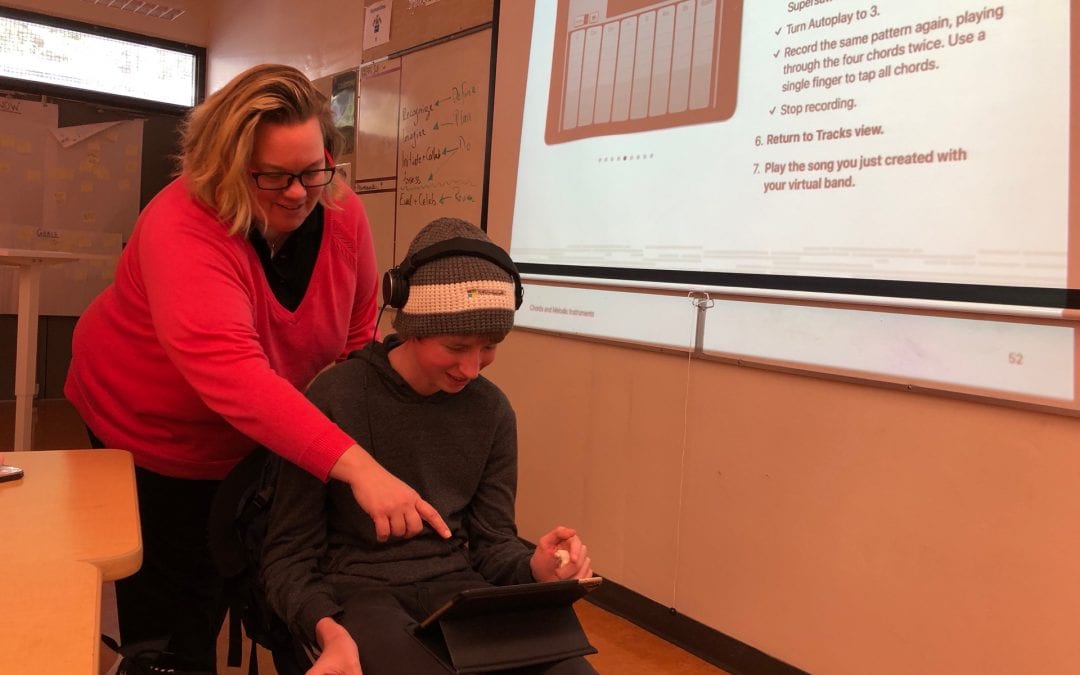Oh GarageBand! As Apple Teachers, PLP teachers are familiar with GarageBand. However, as anyone who has worked in GarageBand will tell you, there is always more to be learned!
Even as we believe maxim in PLP about pretty much everything, GarageBand is an example of learning that really never ends.
Although many of the PLP teachers have backgrounds in music (did you know Mr. Hughes played the trumpet?), GarageBand still was intimidating to us.
Ms. Willemse and Ms. Maxwell even spent a Teacher Tuesday at the Apple Store working to better their skills in GarageBand and still came away feeling like they had only scratched the surface of what the tool could do.
When the Everyone Can Create Music guide came out, we knew right away this was something that could change our instruction and improve student learning exponentially.
Like any thoughtful technology program, PLP has always pushed students to create their own works rather than use someone else’s creations. For example, in videos, students are required to use only Creative Commons materials and our expectations are that the majority of the works are their own creation.
This has long meant that we did a quick one-off lesson on GarageBand basics, like Autoplay in Smart Instruments and then really left the students to fend for themselves with it (not our best teaching practice!).
So it was clear that the Music guide would be helpful!
We started with Chapter 1, Live Loops and worked through all the activities as described in the text. In total, we spent only one class period on the chapter, then students completed the project of creating a short musical piece using loops for homework.
For the students with musical experience, they moved quickly through the activities and found it very rewarding to be able do to more complex things like changing the tempo of the song and customizing the loops. As Emily says, “As for actually creating songs in loops I thought I knew pretty much everything, but [the guide was] still able to show me some cool features…[and] also taught me better understand song terminology”.
For students without any musical background, they felt especially empowered throughout this experience. As Morgan reflected, “To be honest, I thought making a song would be much more challenging and time consuming. But I’m excited to say that it really wasn’t. Now I’m able to make my own music and the process is simple and easy to do.”
The entire experience was overwhelming positive as a class. As Melika summarizes, “The app is so easy to use. There are so many cool tricks that make this app amazing….After I had recorded my song I listened to it a few times and I was really proud of how it sounded like a real professional song”.
All in all, the class was excited by the possibilities this guide offers and as Isy writes, “..looking forward to using these skills to create music … in the future”.

